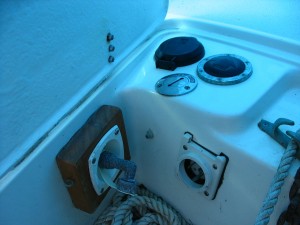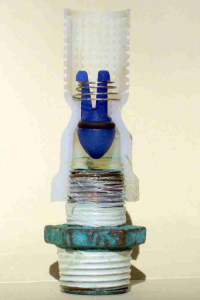Repair of the C-380 Cockpit Table Leaf Support Bracket
by Steve Riddle
Mainsheet, August 200-9
The cockpit table leaf support on the C-380 will eventually separate due to chafing of the internal cord that connects the two support tubes. The cord is also spring loaded: (1) to make it easy to snap the two support pieces together one handed and (2) to keep the two support pieces snugly together if someone bumps the underside of the table leaf. Because the male and female tips are crimped into the body of the support tubes, replacing a broken cord is not normally possible since the cord ends are located several inches down inside the support tubes. Thus, the only apparent option when the cord chafes through has been to buy a replacement support from Catalina.
Yes, if your cord has broken, you can continue to use the support, albeit with some difficultly
You need to be logged in to see the rest of this content. Catalina380-IA members, please login.
To join please fill out a membership application (Association->Membership Application) and send a check to the address on the form.



